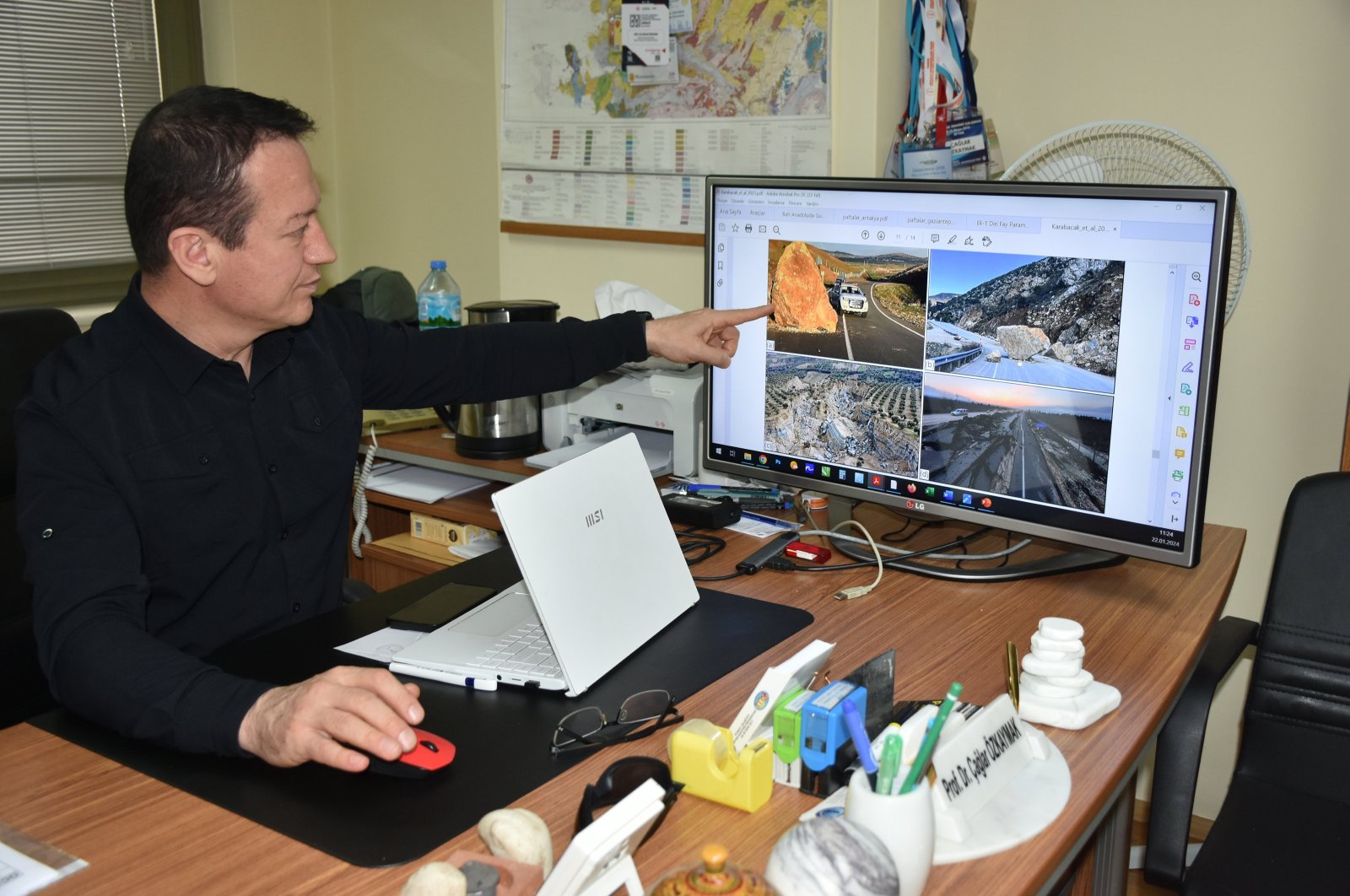
In the aftermath of the Kahramanmaraş-centered earthquakes that occurred on Feb. 6 last year, researchers have unveiled surprising findings, shedding light on the seismic activity in the region.
The team, led by Afyon Kocatepe University Earthquake Application and Research Center Director Çağlar Özkaymak, disclosed that more than 44,000 aftershocks occurred in the region within a year of the two major quakes. The studies suggest that these aftershocks are expected to continue for three or four years, albeit at a decreasing rate.
Özkaymak shared insights from their research, highlighting that they observed a surface rupture of nearly 450 kilometers (280 miles) due to the earthquakes. He emphasized that the seismic activity presented unexpected scientific phenomena, revealing that multiple fault segments ruptured simultaneously. In the first earthquake, four fault segments broke, and in the second earthquake, two fault segments ruptured. This simultaneous rupture contributed to a higher magnitude than initially anticipated.
"The earthquake greatly increased the destruction in the region," Özkaymak stated.
While expressing that they do not anticipate new ruptures in the areas where the earthquakes occurred in the near future, Özkaymak highlighted the importance of investigating unbroken fault segments and said: "As part of the 'Turkish Active Faults Paleoseismology Project,' the team plans to conduct research on the Yesemek, Narlı and Sakçagöz segments of the Dead Sea fault system. This research aims to fill the existing data gaps and provide new insights into the earthquake-generating potential of these faults."
The project will involve collaboration with Dokuz Eylül University professor Hasan Sözbilir, research assistant Mustafa Softa and Eskişehir Osmangazi University professor Volkan Karabacak.
Özkaymak emphasized the need for a better understanding of faults in Hatay and the southern region in terms of seismological and earthquake behavior, indicating that further research will contribute to enhancing preparedness and resilience in earthquake-prone areas.
Highlighting historical earthquake records on the northern branches of the Dead Sea fault system in the 1800s, Özkaymak emphasized the need to investigate the unknown faults on the south side of Antakya. Expressing concerns about potential future earthquakes, he stated: "In the coming years, faults with magnitudes ranging from 7.3 to 7.4, and even greater, are expected in the south and east of Antakya. The Dead Sea fault system merges with the Eastern Anatolian Fault in the Antakya region, and there are significant faults with the potential to produce earthquakes of up to 7.6-7.7 magnitudes. These faults extend southward toward the Red Sea and Israel, forming the tectonic boundary between the Arabian and African plates. The Antakya Fault continues southwest, connecting to the Cyprus arc, which passes through the south of Cyprus and where the African oceanic lithosphere subducts under the Anatolian plate."
Özkaymak added that fractures in this region, especially underwater areas around Cyprus, have the potential to trigger devastating earthquakes and tsunamis.
